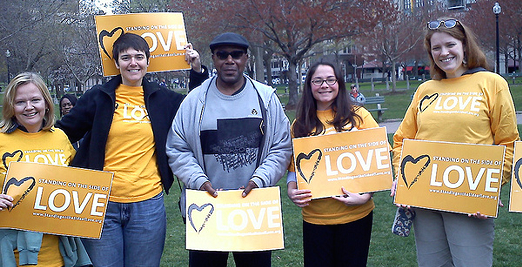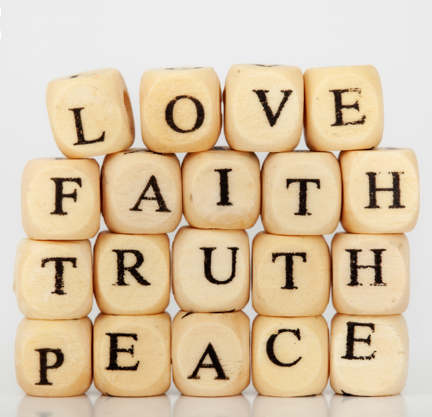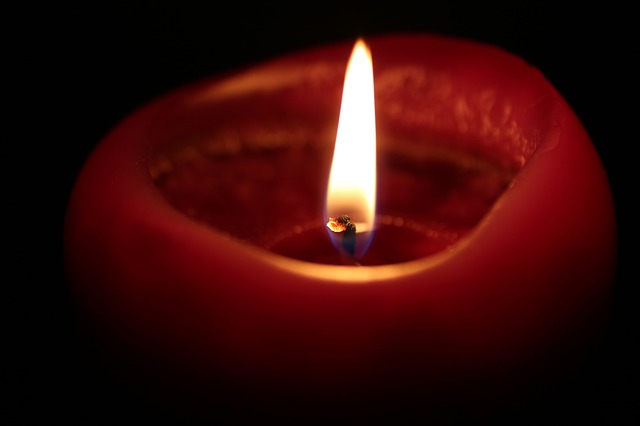Q4M
Transcendence
June 1, 2012June 2012
“All peoples are members of the same body, created from one essence. ” —Saadi
Articles
The Transcendent Within
Rev. Dr. Jaco ten HoveIn a very real way, these encounters helped me to learn to transcend first my self, then my family unit, and then even my country—to understand that there was a lot more of value out there beyond my own immediate world. I then internalized that broader perspective and took to heart a wider reality shown ...Read more »
The God Beyond
Kaaren AndersonAnd so it is that Abraham’s act of practical compassion leads to an encounter with the divine. It was in Abraham’s lived experience—in the choice to transcend a focus on his own needs—that the divine was ushered in. Read more »
Transcending Boundaries
Contributing WriterWhen I was a child, I would stand and gaze at the starry firmament and contemplate infinity. As I stood there, the boundary that is time dissolved; I expanded my Spirit to fill the boundary that is space. My being stilled and all fear, anxiety, and anguish disappeared. Forgotten were the chores, the homework, the ...Read more »
Oppression
Contributing WriterIs a question of strength, of unshed tears, of being trampled under, and always, always, remembering you are human. Read more »
Notice of Annual Meeting
Quest for MeaningThe purpose of the meeting is to elect a moderator from among members present to preside at the meeting, and to elect, if contested, from the slate of candidates presented on the ballot, three members to three-year terms and two members to one-year terms on the board of directors, and the clerk and the treasurer. Read more »
From Your Minister
Rev. Meg RileyI am talking to a man whose wife has just told him she loves someone else. I need to go to the ocean, says this Midwesterner, to see something bigger than my pain. Read more »
REsources for Living
Rev. Dr. Lynn UngarOur Unitarian Universalist Principles and Purposes statement describes one of the sources of our living tradition as: “Direct experience of that transcending mystery and wonder, affirmed in all cultures, which moves us to a renewal of the spirit and an openness to the forces that create and uphold life.” Read more »
Walking (Excerpt)
Contributing WriterTonight I walk. I am watching the sky. I think of the people who came before me and how they knew the placement of stars in the sky, watched the moving sun long and hard enough to witness how a certain angle of light touched a stone only once a year. Read more »
Transcendence
Quest for Meaning“All peoples are members of the same body, created from one essence. ” —Saadi Read more »
Justice
May 1, 2012May 2012
“Justice is what love looks like in public.” —Cornel West
Articles
Inferno of the Living
Rev. Archene TurnerI think we are living in an inferno. People acknowledge we are living in an economic crisis, but family, we are in a moral crisis, too. Read more »
Restoring Justice
Rev. Susan ConradThese men are facing the shame of being labeled as outcasts and failures by their families and communities. Many of them, however, have also begun a journey on the path toward remorse. Each of them has been confronted with a moment of truth—a moment in which he has had to own up to the pain ...Read more »
Justice Should Be a Thing of the Past
Contributing WriterOnce individuals were cheated with misleading mortgages Yesterday storms randomly destroyed homes and families suffered alone Read more »
Women
Contributing WriterAlice Walker has graciously agreed to let us publish her poem, “Women” from Revolutionary Petunias and Other Poems in our printed and mailed version of Quest. Read more »
Hands
Rev. Tom Owen-TowleHands are fascinating things. I like my hands. I think I have nice hands. My hands seem to have a lot of character. Read more »
From Your Minister
Rev. Meg RileyFrom my perspective these UU military chaplains are some of the most amazing advocates for justice in our movement. Every day, every hour, they are standing up for humanity instead of dehumanization, names instead of numbers, fair treatment and equality for all of those they serve. Read more »
REsources for Living
Rev. Dr. Lynn UngarWhat is justice? That seems like a reasonable question for a month when justice is our theme. We know that Unitarian Universalists think that justice is important. After all, our second principle is justice, equity and compassion in human relations. Read more »
The Resting Place (Excerpt)
Contributing WriterMay all nations rise up together and with FireSpirit burn to ashes the Great Anger that separates us. Read more »
Transformation
April 1, 2012April 2012
“Not everything that is faced can be changed. But nothing can be changed until it is faced.” —James Baldwin
Articles
Tapping Transformation
Rev. Karen HeringCan this really come to pass? Will justice ever roll down like waters? Will we find our way to right relationship in our personal lives, in our neighborhoods, and in our world? Many days, it seems the odds are against us, stacked much higher than forty to one. Read more »
Season of Mud
Rev. Sarah YorkA friend of mine from Maine says that down east there are five seasons: summer, fall, winter, spring, and mud. Mud is the season between winter and spring, the season of melting snow when winter’s icy grip loosens its hold…but doesn’t quite let go. Read more »
Reaching Beyond
Rev. Dr. Mark Morrison-ReedIf Unitarian Universalism stands for love, it is wed to freedom. Freedom invites vision. Vision leads to change. Change causes anxiety. Anxiety awakens resistance. Read more »
Where Do We Go From Here? (Excerpt)
Contributing WriterLet us be dissatisfied until from every city hall, justice will roll down like waters, and righteousness like a mighty stream. Let us be dissatisfied until that day when the lion and the lamb shall lie down together, and every own vine and fig tree, and none shall be afraid. Read more »
Hansel and Gretel
Rev. Dr. Lynn UngarBut children rarely listen, and storybook characters, never. When they see that confectionary cottage their entrance is inevitable, like the mosquito bite you swear you will not scratch and always do, and always make it worse. Read more »
Kindness
Contributing WriterBefore you know what kindness really is you must lose things, feel the future dissolve in a moment like salt in a weakened broth. Read more »
What Are We Missing?
Rev. Darcey LaineWe need to start doing things that don’t accomplish anything in particular immediately. This is urgent. This will not wait until you are retired. (Just last week a retired volunteer said to me, “I really have to take a sabbatical. One of these days I am just going to disappear for a month.”) It takes ...Read more »
From Your Minister
Rev. Meg RileyI can still see her face. She looks up at me, head bent over, hair partially covering her face. I don’t know if Jesus turned water into wine, she says, tentatively, as if I might not be interested. Read more »
REsources for Living
Rev. Dr. Lynn UngarAre you a fan of the Transformers action figures or movies? I’m not really into either action figures or action movies myself, but I have to admit there’s something kind of appealing about anything that can turn itself into a whole different thing. Read more »
Spring
Contributing WriterHow deep our sleep last night in the mountain’s heart, beneath the trees and stars, hushed by solemn-sounding waterfalls and many small soothing voices in sweet accord whispering peace! Read more »
Transformation
Quest for Meaning“Not everything that is faced can be changed. But nothing can be changed until it is faced.” —James Baldwin Read more »
Brokenness
March 1, 2012March 2012
“There are cracks, cracks, in everything — that’s how the light gets in.” —Leonard Cohen
Articles
What’s Broken is Brilliant
Rev. Dr. Barbara Wells ten HoveRather we are called to transform the painful and harsh realities of our lives into as much beauty as we can. We are called to create mosaics known as community, as family, as congregations. And we are invited to bring our broken selves into relationship, and find ways to help each other heal. Read more »
Come, Ye Disconsolate
Taquiena BostonMaybe because I was born 1954, the same year as Brown v. Board of Education, I have always known that brokenness is not only individual, but also social and collective. I learned that religious community and theology often hold a people struggling with brokenness, suffering, and injustice. Read more »
How Does Our Faith Hold Brokenness?
Rev. Victoria SaffordThe early Universalists did believe that every person is redeemable, salvageable, possessed of worth and even dignity, no matter what—but this was less a statement about human nature than about the nature of God, who was Love and nothing else for them, understanding and nothing less for them, forgiveness absolutely, if one would be forgiven. Read more »
From Your Minister
Rev. Meg RileyHow do I stay present when things are breaking or broken? How do I allow things to break when they need to break, and still stay on the side of Life? How do I manage to not numb out or move into denial, without going mad and breaking apart myself, when systems far beyond my ...Read more »
REsources for Living
Rev. Dr. Lynn UngarUnitarian Universalists tend to be pretty upbeat about human nature. We remind ourselves of each person’s inherent worth and dignity,and rather than baptizing babies (to cleanse them of original sin), we welcome young ones with rituals that affirm that we’re delighted to have them exactly as they are. Read more »
Brokenness
Quest for Meaning“There are cracks, cracks, in everything — that’s how the light gets in.” —Leonard Cohen Read more »
Hospitality
February 1, 2012January 2012
“Visitor’s footfalls are like medicine; they heal the sick.” —African Proverb
Articles
To Be Seen
Tim KutzmarkIn the pupil of the eye, an endless heaven.The place is India. The religion is Hindu. The woman is old and determined. See her in your mind’s eye. The old woman has walked a long, long way. Her feet blistered and bled days ago, but something within still pushed her forward. Her back bends from ...Read more »
Hospitality at Our Borders
Rev. Dr. Kendyl GibbonsWe are all migrants through history, on a journey together that will bring us either to destruction or to a whole new place of possibilities for humanity, the earth, and its inhabitants. The summoning of that longed-for land, with all its promise and the perils of the journey from here to there, is for every ...Read more »
The Fine Art of the Good Guest
Contributing WriterWe are all visitors—even when we are home. Our time in any relationship or place is ultimately limited. We are passing through; nobody stays forever. How might we act if we consider ourselves guests in the lives of friends and family? Being a good guest is rather simple in principle but occasionally challenging in practice. Read more »
From Your Minister
Rev. Meg RileyWhen Lot welcomed in wandering angels, who were sent to see if the town of Sodom was really as wicked as its reputation, the neighbors demanded that he throw them out of his house. According to many scholars, it is because of their inhospitality to the angels that the town was destroyed. Read more »
REsources for Living
Rev. Dr. Lynn UngarHow do you feel when you are about to head off to a party? Excited? Eager? Maybe a little bit anxious? For me, heading off into the midst of a group of people, some of whom I don’t know, always makes me a little jittery. Am I wearing the right thing? Am I bringing the ...Read more »
Descent into JFK
Contributing WriterDescent into New York airspace is hard. … Languages crisscross from polyglot to melting pot. As the cabin pressure changes, the world shifts its weight to the other foot. Great care is required now in opening the compartments of the mind. Read more »
Hospitality
Quest for Meaning“Visitor’s footfalls are like medicine; they heal the sick.” —African Proverb Read more »
Living Faith
January 1, 2012January 2012
“If there is no struggle, there is no progress.” —Frederick Douglass
Articles
Nothing Short of Evangelism
Rev. Dr. Judit GellerdIn 1990, a hundred and thirty American and Canadian Unitarian Universalist congregations formed one-to-one covenantal relationships with the same number of Transylvanian Unitarian churches. Later this Partner Church Program widened to involve close to four hundred churches on both sides of the Atlantic. Read more »
Feeding Faith
Contributing WriterSome of my most intense experiences of faith have come at the small window that overlooks a field and a ridge, which I’ve dubbed Freedom Ridge. It is at this prison cell window that I have come face-to-face and, quite literally, nose-to-nose with spiritual teachers that have given me glimpses no human teacher could. Read more »
The Marker’s Meaning
Rev. Jane RzepkaSome years back I read a story in the Indianapolis Star. It was a Sunday paper kind of an article about finding happiness. “The truth is,” says the column, “the real secret to happiness isn’t a secret at all. It’s just not that pleasant a truth. Nor does it rhyme. Read more »
We Are All About Saving Souls
Rev. Suzanne MeyerWhat are we doing here? What is our business? The answer is simple: we are in the business of saving souls. You heard me right: what we are about is saving souls. Read more »
From Your Minister
Rev. Meg Riley“I often think of humankind as a long procession whose beginning and end are out of sight. We, the living, are an evolutionary link between all life that has gone before and all that is yet to be…” Read more »
REsources for Living
Rev. Dr. Lynn UngarBut we know what Dr. King really cared about from his actions and his words while he was living. And so they decided to honor his words: “Life’s most persistent and urgent question is: What are you doing for others?” by creating a day of service. Read more »
Birdfoot’s Grampa
Contributing WriterThe old man must have stopped our car two dozen times to climb out and gather into his hands the small toads blinded by our lights and leaping, live drops of rain. Read more »
How Do I Live a Good Life?
q4madminPerhaps the central question of religion for Unitarian Universalist is the question of how to live a life that is ethical and compassionate, and leaves the world in some measure better than how we found it. Read more »
Living Faith
Quest for Meaning“If there is no struggle, there is no progress.” —Frederick Douglass Read more »
Hope
December 1, 2011December 2011
“What is to give light must endure burning.”—Viktor Frankl
Articles
You Are the Light of the World
Rev. Barbara Gadon“Make of yourself a light,” said the Buddha upon his death. Like Jesus, he knew that he was light, and people were drawn to him. Read more »
Hope: The Theology of Despair
Contributing WriterThe truth is that I am not an authority on hope. Until recently I didn’t even know what hope was: I thought it was something akin to a wish, a pipedream. Read more »
Hope and Sorrow
Rev. Dr. Mark BelletiniI had a very different sermon prepared for Christmas Eve, and I tossed it just a few hours before the service rolled around. A more sparkling, effervescent sermon, it was. Read more »
From Your Minister
Rev. Meg RileyAccording to Joshua Friedman, an astrophysicist at the University of Chicago, “All the visible world that we see around us is just the tip of the iceberg.”… Read more »
REsources for Living
Rev. Dr. Lynn UngarHave you seen the musical Into the Woods? It’s a Broadway show in which a variety of storybook characters—Little Red Riding Hood, Cinderella, Jack (of the Beanstalk), etc.—meet up together in an adventure in the woods,.. Read more »
Looking For a Sunset Bird in Winter
Contributing WriterThe west was getting out of gold, The breath of air had died of cold,When shoeing home across the white, I thought I saw a bird alight. Read more »
Alcoholism
November 13, 2011Step Three: “Made a decision to turn our will and our lives over to the care of God as we understood Him.”
People say this step is a great tool in pain management—asking a person to turn her or his will and life over to the care of God, as we understood Him. In my alcoholic bottom I cringed when I first heard this approach. I said, “This is not what Dr. King taught. Dr. King taught people to sacrifice in order to help make the world a better place.”
For me AA’s, “Let Go and Let God,” conjured what Catholic Bishops working on the side of the landed elite told the peasants of Latin America.
Wedding Ceremonies
November 11, 2011There is no one “right way” to structure a wedding ceremony, but there are ways to create a pleasing flow that allow you to most powerfully express you love and commitment. Just as ingredients are added in a general order when cooking, your wedding will be a more meaningful and enjoyable experience for you and the congregation if you give careful thought to how it will unfold.
Here is a typical traditional wedding ceremony to help couples start thinking about what you would like. Feel free to add, remove, embellish, and rearrange elements according to your wishes and the suggestions of your officiant.
Note: Some churches and officiants consider weddings to be an extension of their worship tradition and, as such, may only perform weddings using a set ceremony. Check with your officiant for details.
For more information about weddings in general, see Weddings 101.
Weddings 101
November 11, 2011Now that you’ve made the decision, it’s about time to start thinking about the wedding. Weddings come in many shapes and sizes: big and small, formal and casual, and they join couples of many kinds in many places with many different types of people officiating.
What is a Wedding?
A wedding celebrates the love shared between two individuals. It is also the ceremonial act during which two people commit to one another publicly. A wedding is a joyous occasion, a day of recognition and affirmation of the great love a couple shares. It provides a way for the couple’s community to affirm their support for that relationship and the family the couple builds together, and for the couple to affirm the importance of their community in upholding their life together. And even beyond that, a wedding is a sacred ritual that reminds us that the Holy is present wherever there is great love.
Marriage both acknowledges an emotional bond between two people, and strengthens that bond one that is made in the company of a community of people, usually family and friends that acknowledge that bond and agree to support the couple in their joined lives. While weddings can and should be fun, they are also one of the most important occasions in a couple’s life together, and they can get complicated. Yet even with this “stressful adventure,” a wedding ceremony is a unique and beautiful celebration that expresses all that is in the hearts of the couple, their friends and their families.
Renew Your Membership
We invite you to join your fellow CLFers to renew your CLF membership and stewardship of the CLF for another year.
Support the CLF
Can you give $5 or more to sustain the ministries of the Church of the Larger Fellowship?
If preferred, you can text amount to give to 84-321
Newsletter Signup
About
Quest for Meaning is a program of the Church of the Larger Fellowship (CLF).
As a Unitarian Universalist congregation with no geographical boundary, the CLF creates global spiritual community, rooted in profound love, which cultivates wonder, imagination, and the courage to act.
Contact
Church of the Larger Fellowship Unitarian Universalist (CLFUU)
24 Farnsworth Street
Boston MA 02210











